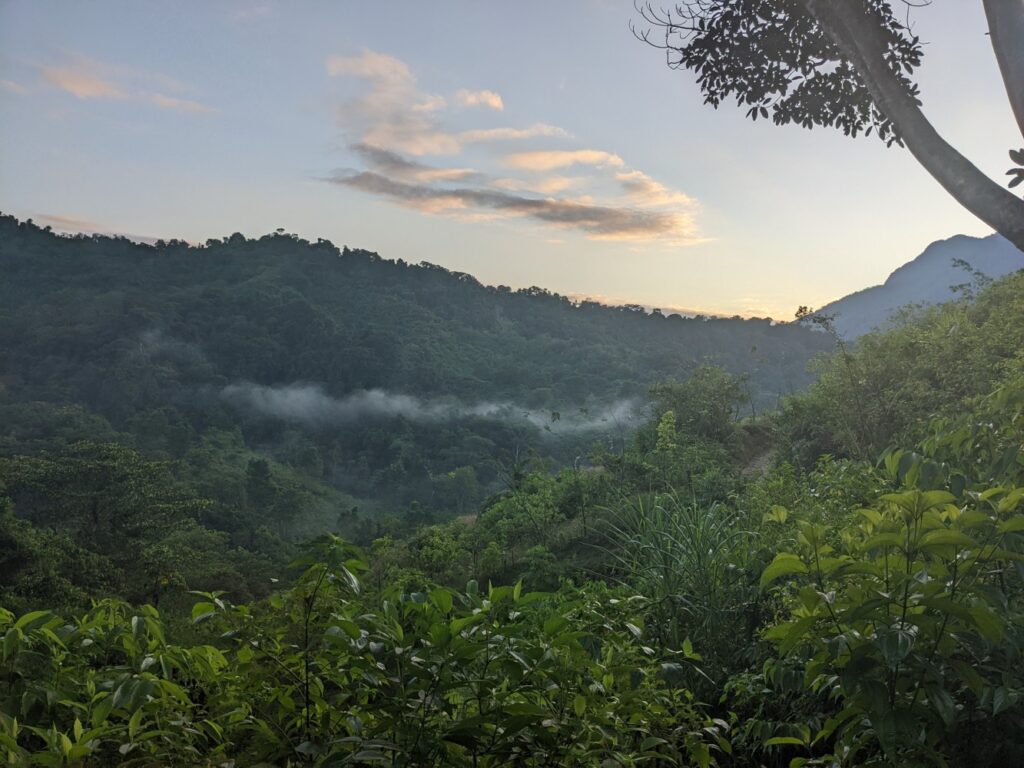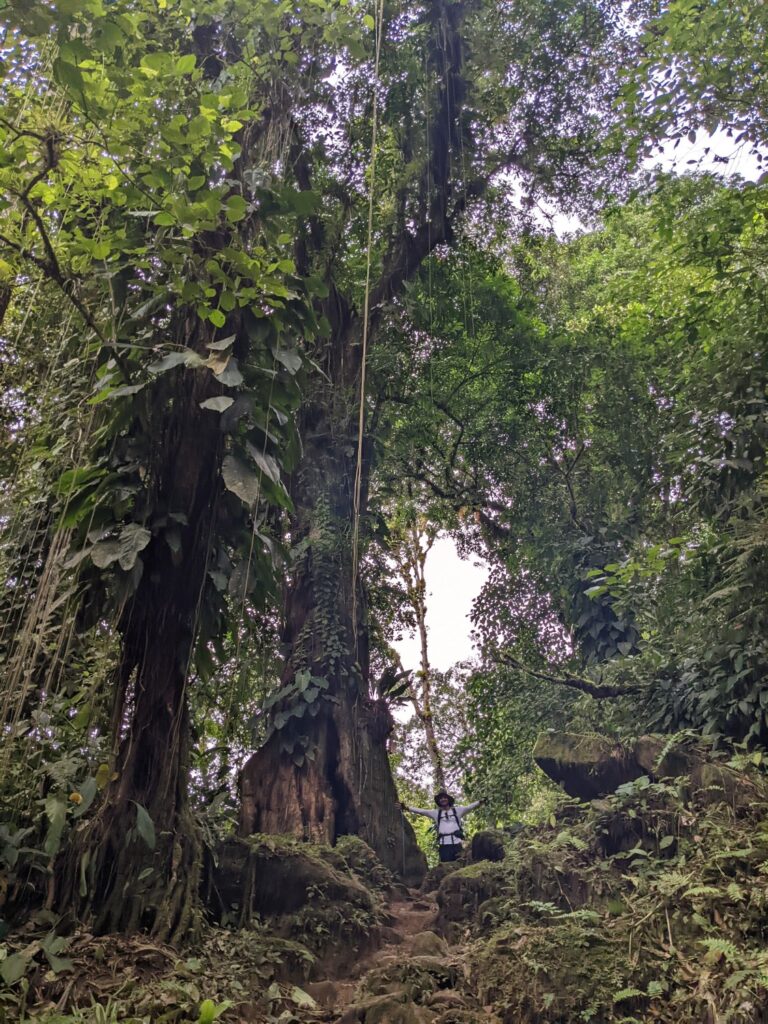“Dad, we should go and visit the Lost City,” my son had suggested.
“Oh, I don’t know if I’ll have time for that. Too busy!”
“They say it is one of the most biodiverse ecosystems in the world,” he added, emphasizing ecosystems. He knew how to capture my interest. ‘What better teacher on ecosystems than nature itself?!’ I thought.
Deep in the jungle of Colombia’s Sierra Nevada is nestled a city that was once populated by indigenous tribes of tens of thousands. While these communities were a mere 40 miles (60 kilometers) from the Caribbean Sea, the swift rise of the Sierra Nevada and dense jungle vegetation kept them out of the sight (and the greed) of colonial settlers. And yet an enemy would invade and wipe them out, leaving behind a city, which for more than half a millennium would become lost under the cover of layers upon layers of tropical jungle.
Getting to the Lost City starts with a drive from the nearest coastal city of Santa Marta in Colombia, followed by 1 hour drive up a rugged mountain road to Mamme, the town at the entrance of the Parque Teyuna Natural Park where the hiking starts. It did not take long for us to become engulfed with jungle; and the deeper we went, the denser it got. The vegetation seemed to be fueled by rich brown soil; the streams by low clouds and light rain; and the tall trees by direct equatorial sunlight. The vegetation included all sorts of ferns, lichens, mosses, and orchids; and as we distanced ourselves from civilization, the lush vegetation soon started welcoming all kinds of birds, reptiles, amphibians, insects, and ants—all buzzing in apparent unison. At night, the jungle would come even more alive with a symphonic crescendo of surround sounds.

Of course, at first it all seemed like one single ecosystem, but the more we hiked the more it became apparent that the natural ecosystem’s architecture consisted of many micro-ecosystems, each with its unique characteristics, but all seamlessly intertwined and seemingly synchronized as one. For instance, the streams that housed algae, fish, frogs, and insects sat adjacent along the river embankments (all in all, there are 36 rivers in the area) with water-friendly bamboo, lilies, and palms. As the path cut inland, trees grew taller jostling for light. Each tree formed its own micro-ecosystem of a biodiversity of ferns, climbers, and parasitical plants like orchids all hanging on branches and feeding off the tree. A constant supply of falling leaves, dead branches, insects, ant colonies, and rodents provides the tree itself the necessary nutrients, helping it to grow and reach for more sun and rain. Of course, their supply ultimately depended on the entire region’s ecosystems all interoperating to deliver the basics of life: The clouds delivered rain and fed the rivers, which in turn passed the water and nutrients to the bushes and trees; and those did the same for their inland neighbors. The resulting lush greenery and humidity caused evaporation that caused more rain—resulting in a positive lifecycle that allowed micro-ecosystems to interact with others and feed off the overall ecosystem (and vice versa). Interestingly this very ecosystem does not even exit a mere 40 miles away in the city of Santa Marta, which is barren with hardly any rain.

In nature, it quickly becomes evident that there is no single ecosystem that dominates. Rather “interoperability” makes it all seamlessly connected, prosperous, and resilient. Trees may be micro-ecosystems of their own, but they could not survive for too long, let alone prosper, without the nearby rivers and streams that carry minerals and the rodents and insects that provide nutrients and spread their seed. If one were to clear out a sizeable piece of the jungle and leave one tree with its micro-ecosystem, the flow of water and soil would change, so will the quantity of sun, as well as the amount of nutrients and fauna supporting it and spreading its seed. Such an isolated tree’s ecosystem will surely not survive a single storm, let alone prosper. In nature, larger ecosystems prosper when they allow their micro-ecosystems to be interconnected but with the flexibility to grow to their potential.
As I walked through the jungle, I thought about the similarities and differences with human made business ecosystems and their behavior. Typically, business ecosystems show predatory and domineering behavior. This strategy, however, is increasingly failing in the age of digital transformation, for no one company can afford to live off of or partner with an isolated business ecosystem—just ask pure play mainframe players, or Novell partners, or partners that bet the house on Palm or Blackberry. Compare this to the PC “ecosystem of ecosystems” that IBM unleashed on August 12, 1981, or the Internet that DARPA launched, and which now includes millions of companies worldwide and trillions of Dollars in value.
The famous Harvard biologist EO Wilson once said, “In business, one speaks of a ‘balanced portfolio’ and ‘flexibility’ and ‘innovation. In [natural] ecosystems, we speak of the same thing – of a balanced portfolio – when it comes to the diversity of species that exists in an ecosystem, and the flexibility of that ecosystem. A parallel that fits a broad model of what keeps a system healthy, growing, and resistant to change.” In so many ways, I think that is exactly what TIDWIT is doing: Provide an ecosystems network platform that connects micro-ecosystems of organizations all over the world—one that does not impose, dominate, or isolate; but rather one that makes it easy, quick, and affordable for each organization’s micro-ecosystem to be connected to others offering it flexibility, opportunity, and resilience.
At the end of the hike, climbing the 1300 steps necessary to reach the Lost City, the lesson from natural biodiversity became ever clearer: Ecosystems that are isolated, rigid, closed, and inflexible may eventually fade into extinction. The tragic irony of Colombia’s Lost City is that its inhabitants created a micro-ecosystem that was isolated from all the humanity that surrounded them as a form of protection. Tragically, it had the exact opposite effect. The indigenous’ bodies did not develop the necessary immunity and resilience that a more open ecosystem could have, potentially protecting them from an invisible and lethal disease, malaria. And so, like others equally moted ecosystems found in nature, theirs eventually perished, leaving behind a deserted city that foretold the risks of creating isolated ecosystems.

Meanwhile, all around the Lost City, the natural jungle driven through evolution continued to grow and flourish unabated. Why? Nature had decided it was wiser to go with an interconnected biodiverse multi-ecosystem approach that provided seamless interconnectivity flexibility, adaptability, and above all resilience! I hope TIDWIT will continue doing the same in the business world.







